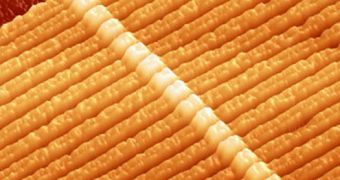According to physicists, it could be that adding a little bit of noise to electronic memories could help boost their storage capacity in the near future. But this will only work for memristors, a special class of electronic memories that are heralded as the next big thing in the industry.
While the new prediction has not been tested yet, experts appear to believe that exposing memristors to noise could indeed make them work better. At this point, the idea relies exclusively on mathematical foundations, its creators say.
Also from a math perspective, it's worth mentioning that four primordial electronic devices have been hypothesized to exist. Three of them – the inductor, the capacitor and the resistor – are already known and in widespread use, whereas the forth – the memristor – was only discovered 3 years ago.
Since then, progress in researching it in more detail has been slow, and so even today memristors are very little-used technology. These devices are the only ones in the world that display a critical property called hysteresis.
What this means is that the resistance of the memristor is entirely dependent on the intensity of the electrical current that flowed through it in the past. For all intents and purposes, this turns them into resistors with memory, physicists explain.
In spite of being easy to produce and cheap, memristors face a great challenge, which is noise. The way in which they operate makes them extremely susceptible to the influences of this phenomenon, which can easily destroy hysteresis.
Experts at the University of California in San Diego (UCSD), led by physicists Alexander Stotland and Massimiliano Di Ventra, have shown in the new research that noise does not destroy this property.
The investigation disproves a lot of studies that hinted at this being the case. The UCSD experts show that applying noise to memristors has a single effect, which is to enhance their memory, rather than hamper it, Technology Review reports.
This study could have widespread applications in numerous areas of research, such as for example neurobiology. Experts have been trying to figure out how neurons – nerve cells in the brain – operate and transmit electrical impulses for years.
Here too, the general view was that noise needs to be avoided, if neural networks are to work properly. But it could be that the exact opposite is true, and that the neurons do need noise in order to have the amazing capabilities that they do.

 14 DAY TRIAL //
14 DAY TRIAL //